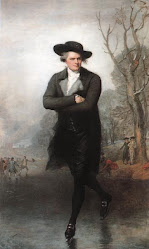Allegorical portraits allowed artists to portray women in roles outside their normally restricted occupations, as well as to take on the attributes of the Goddess or other figure represented. Artists could indulge in a greater degree of idealisation and choose settings and props suitable for the situation. In doing this they moved the portrait genre closer to that of history painting.
While allegory flattered the status of the upper classes, it could also be used to present images of women like actresses, who were less favoured by wealth or breeding, and help to make them socially acceptable. Sarah Siddons, England’s leading tragic actress, confessed herself ‘an ambitious candidate for fame’, anxious to meet ‘all the good, the wise, the talented, the rank and fashion of the age’ at Reynolds’s parties. Rather than portray Sarah Siddons in one of her stage roles, Reynolds pulls out all the stops in casting her as The Tragic Muse. Melpomene was one of nine Muses, daughters of Jupiter, who were the goddesses of creative inspiration in poetry, song and the other arts.
~~~

























